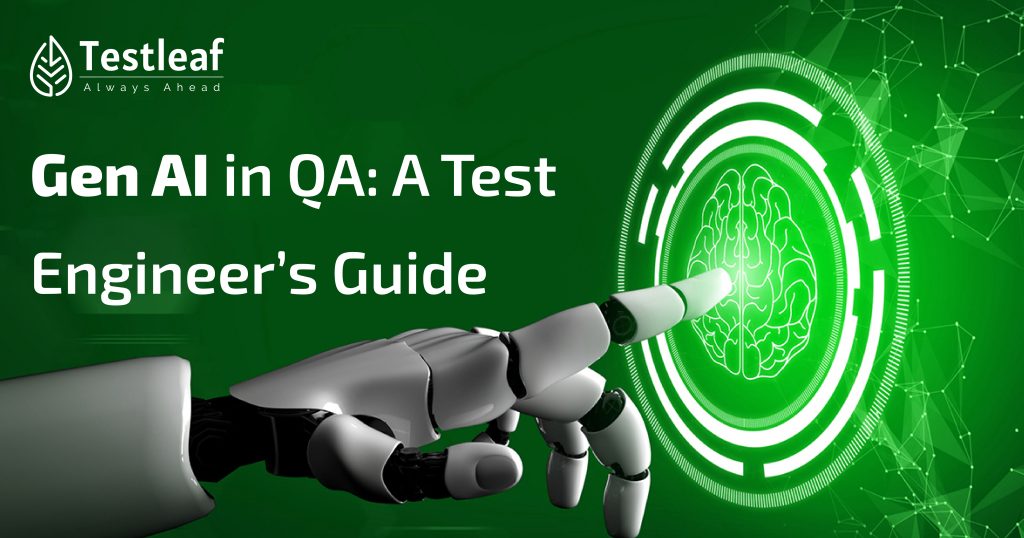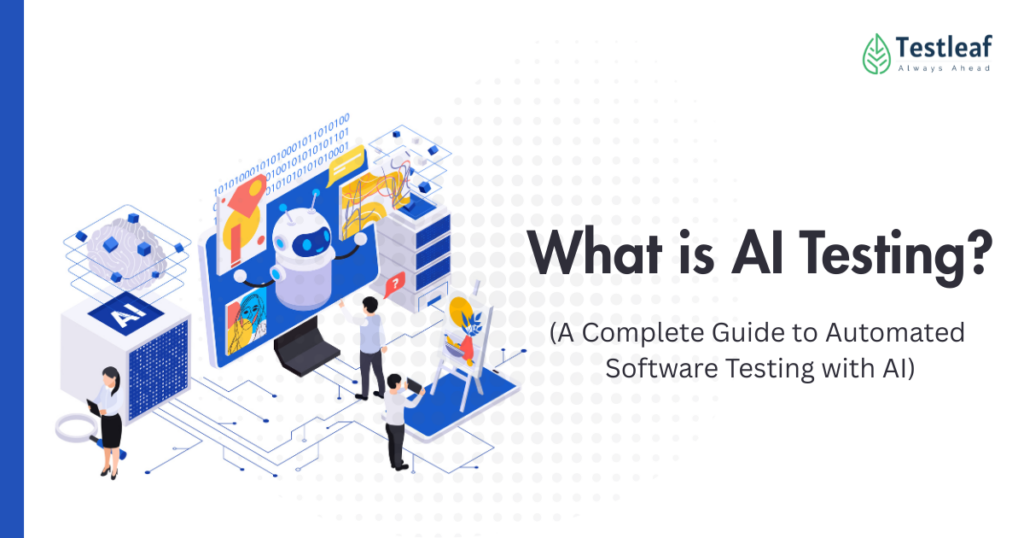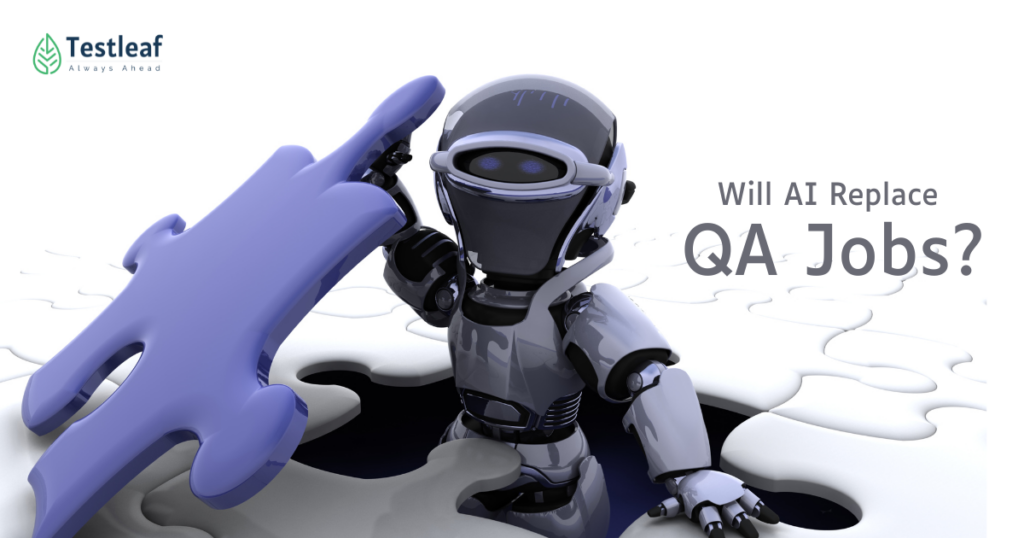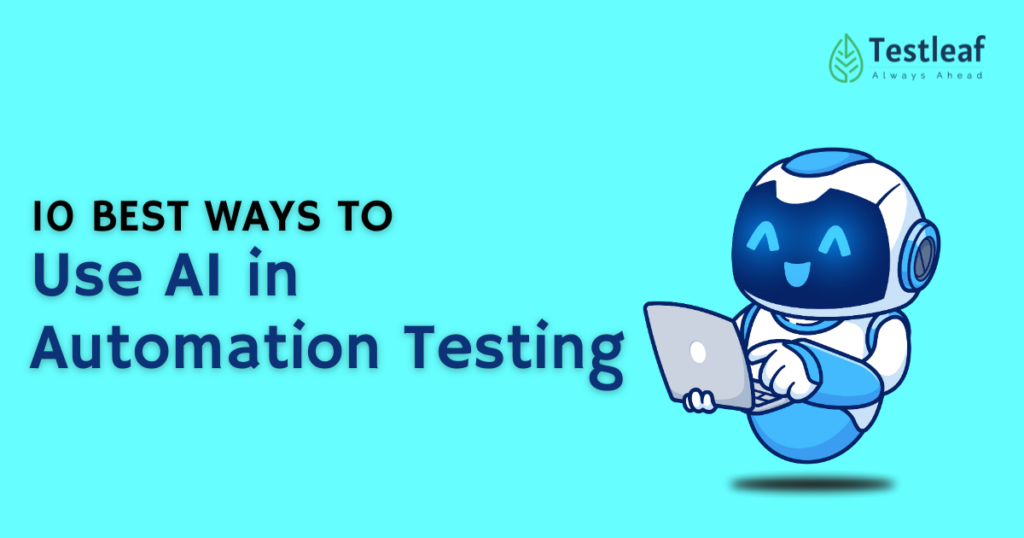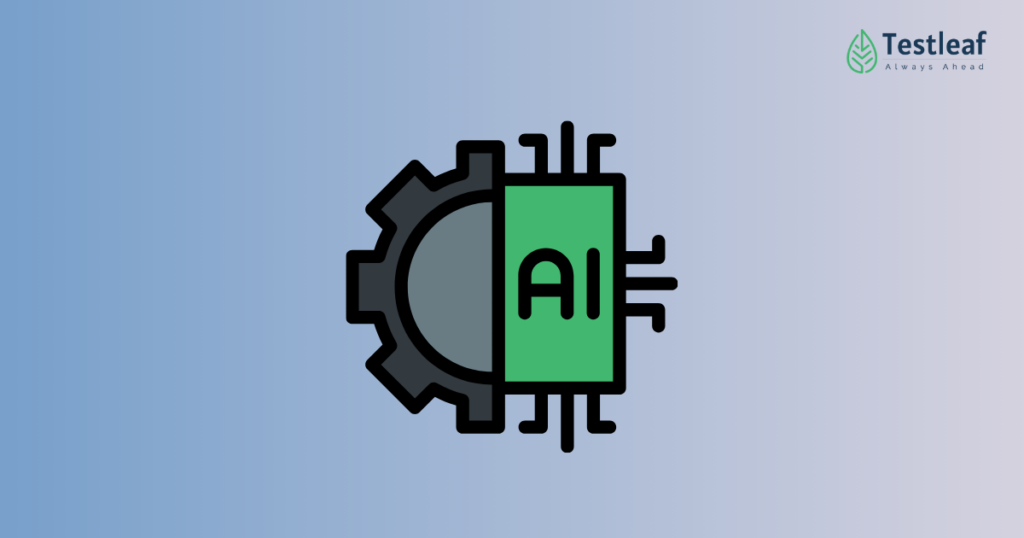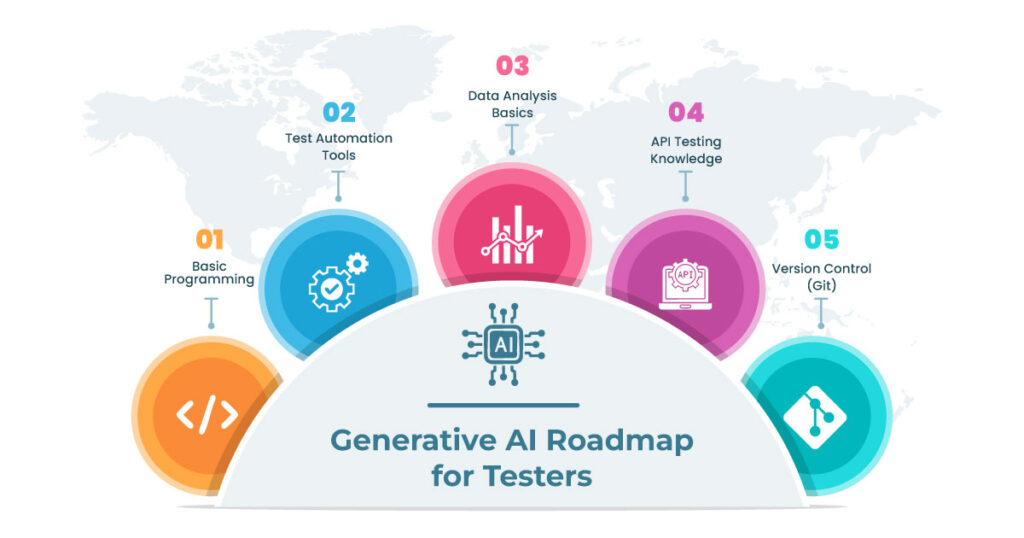In recent years, Generative AI has emerged as a revolutionary force across various industries. One domain experiencing a major transformation is Quality Assurance (QA). From accelerating test creation to predictive bug detection, the influence of AI for QA testers is no longer futuristic—it’s already reshaping the present.
This article explores how QA testing with AI is redefining testing processes, the benefits it brings to test engineers, and actionable tips to adapt and thrive in this evolving landscape.
Why Generative AI Matters in QA
Generative AI refers to systems capable of generating code, text, test cases, and data using machine learning models trained on massive datasets. In QA, this capability is helping to reduce manual effort, enhance accuracy, and accelerate delivery cycles.
Key ways Generative AI is disrupting QA:
- Automating repetitive test case generation
- Writing unit and integration tests
- Generating realistic test data
- Enhancing bug reporting with context-rich documentation
- Predicting potential failure points before release
Popular Articles: automation testing interview questions
The Traditional QA Process vs AI-Driven QA
| Feature/Activity | Traditional QA | QA with Generative AI |
| Test Case Creation | Manual, time-consuming | Auto-generated based on code/user stories |
| Test Data Generation | Script-based or semi-manual | AI creates realistic and diverse datasets |
| Regression Testing | Requires human intervention | Continuously runs with minimal supervision |
| Defect Prediction | Post-failure analysis | Predictive insights from historical data |
| Test Maintenance | Needs frequent updates | AI adjusts tests to UI/code changes |
QA testing with AI brings speed, adaptability, and precision to processes that were traditionally slow and error-prone.
How AI Helps QA Testers: Real-World Examples
1. Test Script Generation
AI tools like Testim, AutonomIQ, and Functionize allow testers to describe user scenarios in plain English. The AI then generates executable test scripts—saving hours of manual coding.
2. Smart Test Prioritization
By analyzing historical test runs and bug trends, AI can recommend which test cases to run first. This ensures high-risk areas are tested before others.
3. Defect Analysis and Bug Reporting
AI can detect anomalies in logs, screenshots, and user behavior. It can even suggest fixes or point developers directly to the root cause, speeding up the triage process.
4. Visual Testing
Generative AI compares baseline UI snapshots with new builds and flags pixel-level deviations—something that’s extremely tedious manually.
Benefits of Using AI for QA Testers
- Higher Accuracy: AI reduces human error in test creation and analysis.
- Faster Time-to-Market: Automated testing shortens release cycles.
- Smarter Insights: Data-driven predictions help prioritize testing efforts.
- Reduced Maintenance: AI adapts to application changes, reducing test flakiness.
- Upskilling Opportunities: QA testers can shift from manual testers to QA strategists and automation engineers.
Practical Tips for QA Engineers to Leverage AI
Here are key tips for integrating AI into your QA strategy:
- Start Small
Begin by automating basic test scenarios or repetitive regression tests using AI-powered tools. Build confidence and expand gradually. - Choose the Right Tools
Explore platforms like Mabl, TestCraft, or Katalon Studio that offer built-in AI features tailored for QA teams. - Collaborate with Dev Teams
Work closely with developers to feed the AI with clean, annotated code repositories and bug logs for better results. - Keep Human in the Loop
Use AI to augment, not replace. Critical thinking, test logic, and exploratory testing still require human insight. - Monitor and Tune AI Models
Regularly evaluate the performance of AI-driven test scripts and retrain the models with updated data to ensure reliability.
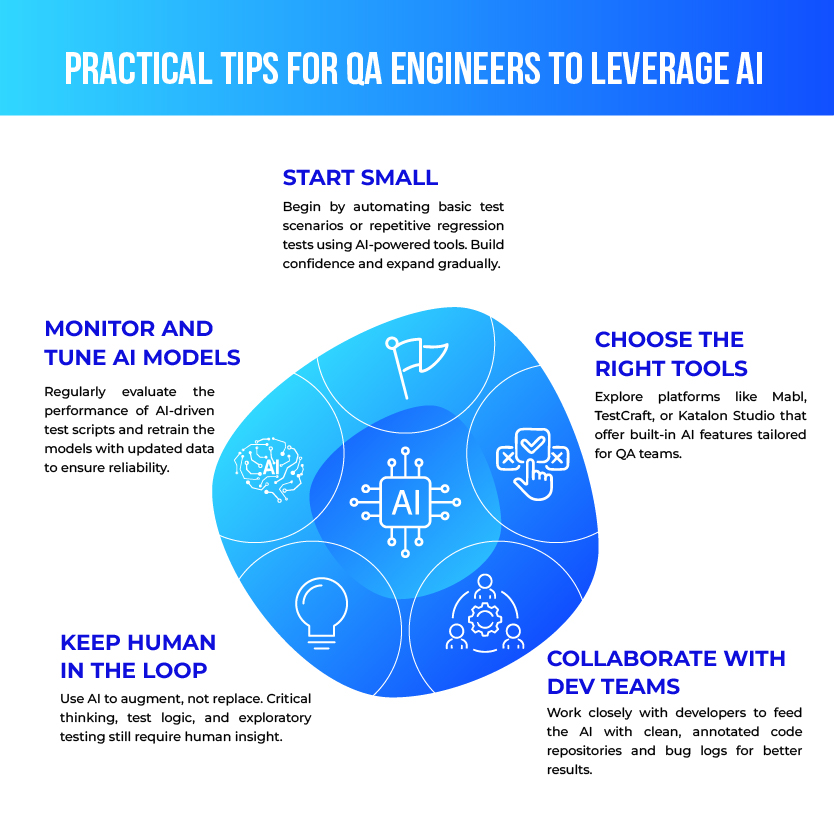
Future Trends to Watch
The integration of Generative AI into CI/CD pipelines is accelerating. Soon, QA engineers might interact with AI bots that not only write and run tests but also fix failed tests autonomously. Furthermore, natural language testing—where testers simply describe a scenario and AI builds the test—is becoming mainstream.
Important: While AI brings immense efficiency, it’s not a silver bullet. Ethical use, data security, and continuous validation of AI-driven outputs remain crucial.
Final Thoughts
Generative AI is not just a tool—it’s a game-changer for QA testers. By embracing AI-powered testing strategies, test engineers can shift their focus from mundane tasks to high-value analysis, risk assessment, and strategic planning.
As QA testing with AI becomes the norm rather than the exception, professionals who adapt early will lead the transformation. With the right tools, mindset, and upskilling, every QA tester can evolve into an AI-augmented testing expert.
We Also Provide Training In:
- Advanced Selenium Training
- Playwright Training
- Gen AI Training
- AWS Training
- REST API Training
- Full Stack Training
- Appium Training
- DevOps Training
- JMeter Performance Training
Author’s Bio:

As CEO of TestLeaf, I’m dedicated to transforming software testing by empowering individuals with real-world skills and advanced technology. With 24+ years in software engineering, I lead our mission to shape local talent into global software professionals. Join us in redefining the future of test engineering and making a lasting impact in the tech world.
Babu Manickam
CEO – Testleaf
